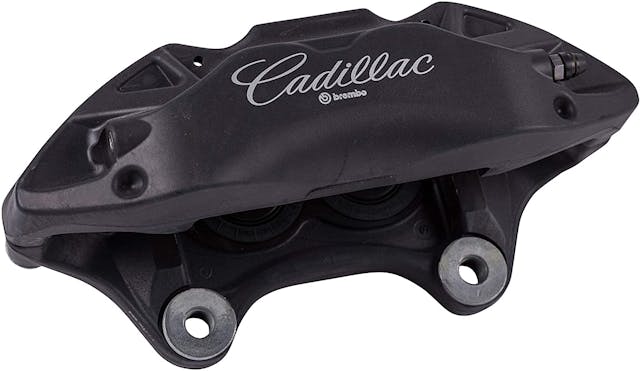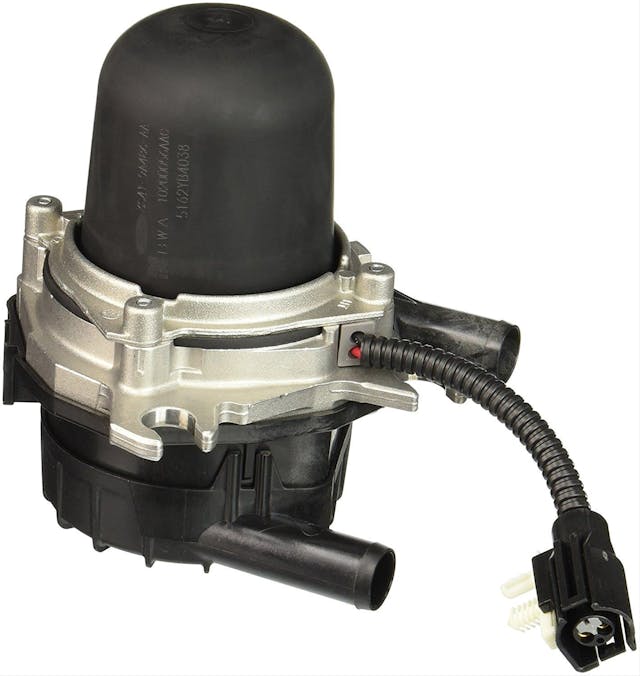Media | Articles
3 more high-tech junkyard donor parts for your project
It seems like everyone agrees that cheap, off-the-shelf donor parts for projects are a good idea. So in the giving spirit of the season, here are three more parts we suggest scouring from junkyards and dusty corners of the internet. (Check out Part 1 of this story here.)
I think of these parts as OEM-supplied Lego bricks for a build. These companies have spent the money and time to engineer durable performance solutions for all kinds of demands in a vehicle, not to mention the tooling and inventory to support millions of cars on the road. The good news for you? Deals can be found on certain trick parts.
And while I’m focusing on universal components here today, I want to draw attention to builds like this one: a Pontiac G8 GT that belongs to my neighbor. This build features bolted-on front calipers and rotors from a CTS-V, rear CTS-V calipers with a Chevy SS-sedan rotor, and a beefier and shorter-ratio Camaro differential. All of it is capped with CTS-V wheels (which later had Pontiac emblems in the center caps to seal the look). This kind of piecemeal approach to go shopping within an OEM’s catalog of parts can lead someone to go on all kinds of tangents with different applications. Let us know in the comments which parts-swapping secret recipes you’ve tried on your own project.
Cadillac Brembos

GM utilizes commoditized parts like I use Frank’s Red Hot; once a supplier’s component is bought, it’ll end up on just about everything. In the case of Brembo’s fixed four- and six-piston brake calipers, the General has bolted a set to dang-near every performance product it has sold for the past decade. With such high volume comes a wealth of replacement parts, making what was once an exotic, expensive braking setup incredibly affordable.
Brembos aren’t inherently special, but they are fairly rigid thanks to their fixed caliper design. In this setup, the body of the caliper stays affixed to the suspension with only the brake pads floating and moving, instead of a traditional floating caliper which lets half of the caliper slide along pins. In theory, this helps provide better pedal feedback, and the brake pads can be swapped without removing the caliper.
Marketplace
Buy and sell classics with confidence
The result is a stout, powerful, and easy to adapt performance caliper for anywhere from $100 to $150 a corner. Cadillac-Brembo calipers are so common that I found them first while searching for Subaru brake upgrades. The price for the STi’s aluminum Brembos had skyrocketed right as these GM-sourced Brembos hit the market, and a handful of sites popped offering conversion brackets to adapt them. Another option are GM’s other six-piston calipers, originating from the Corvette and Camaro. Prices for these components are similarly reasonable thanks to their mass production, but the CTS-V and ATS-V brakes continue to be a favorite among gearheads.
Mercedes power steering pump

In our last installment we discussed the benefits of a particular electric power steering column, but such a part may not work for everybody. It isn’t always easy to find a manual steering box or rack, as converting a powered unit to manual can sometimes be less than ideal, and the motor possibly sticking out from the column like a growth may not flatter some dashboards.
The latter condition was the reason why Bad Obsession Motorsport’s turbocharged 4WD Austin Mini, the maniacal “Project Binky”, opted for a Mercedes W168 electric power steering pump using the subframe and steering components of a Toyota Celica GTS. The Mini didn’t just lack space under the dash, however; the accessory drive of the Celica GTS’ chunkier 2.0-liter turbo-four didn’t fit into Binky’s narrow chassis, and an electrically driven pump made the best use of the minimal free space available under the hood. It holds its own reservoir on top, too, and takes essentially three wires to hook up: a 60-amp fused power, similarly capable ground, and a 12v ignition source. Long live Project Binky!
Air pump for horsepower

One lesser-known horsepower tricks is to put the crankcase under vacuum. No matter how fresh and tight a motor is, there will always be blow-by through the piston rings, and this phenomenon only increases with higher horsepower levels as more cylinder pressure is created. The situation is especially noticeable with forced-induction engines, in which the added air volume puts more load on the rings under compression. Blow-by doesn’t just contaminate the oil; it can also begin to pressurize the crankcase—the inside of the engine block—which contributes to oil consumption back through the rings when the piston is on the intake stroke. This spells trouble in the form of detonation and can contribute to meaningful oil consumption, whether it’s in the context of the longer cycles of racing or even street driving.
Blow-by also contributes to windage issues, which creates its own set of problems for horsepower production and oiling system efficiency. To compensate, OEMs try to at least vent that positive crankcase pressure through the Positive Crankcase Ventilation, or PCV, system. Few setups, however, have any form of vacuum to promote PCV flow.
Most crankcase vacuum pumps to promote PCV flow start at a couple hundred bucks, or they’re pulley-driven and would likely require need some one-off mount to fit your project’s accessory drive. The AC Delco 12568324 emissions air pump is commonly found in early 2000s Ford Focuses and late 1990s to early 2000s GM cars, trucks, vans, and SUVs. Because of the sheer mass of vehicles sold there’s usually a healthy supply of these pumps in junkyards, and in the worst case they can be found as low as $75 online. They work well as a low-buck crankcase vacuum pump, plumbed in series with a two-port catch can in between the pump and engine. These pumps are normally used to push air into the exhaust manifolds to essentially lean out the mixture before the exhaust gas flows into the catalytic converter, which helps reduce the warm-up time for the catalyst inside during a cold start. And all that’s needed to run it is 12v power and ground.





